
Transcription
#76 Brownian Motion, Nanotechnology - Unlimited Supply of Energy?
by Nate A. Lindell 22 July 2012
It's interesting to me how different associations combine in minds to lead to possibly obvious yet great discoveries. E.g., Archimedes & his bathtub, Newton & his apple... Relax, I'm not claiming this idea of mine is on Newton's or Archimedes level, but, as Einstein's observation that time must be taken into consideration to more accurately understand the universe & as Hofstadter's observation that cognition is, possibly, based on analogies, sometimes people overlook the obvious. Well, Einstein's known for E=Mc2, making me think of energy while I recently read his bio by Clark; and in this bio, "Brownian motion" (i.e. the random movement of molecules of a liquid) was touched upon; while I've long been interested in nanotech, particularly the creation of super-strong filaments of pure carbon. All of these ideas led to this.
Brownian Motion is a potential source of energy, because motion is caused by some energy (in the case of Brownian Motion, as I understand it, the energy is that of the electrical charges of the sub-atomic particles repelling and attracting each other, which is increased with increases in temperature...). The trick is "capturing" this energy & converting it into usable energy.
This is where the nanotech comes in.
Consider windmills: they capture the energy of moving molecules of air (1) and convert it into usable energy. I'm proposing that nanotechnology be used in a similar way to harvest the energy from Brownian Motion. It seems like a theory worth exploring anyway.
Superstrong carbon nano-fibers produced, somehow (this must be the tricky part) so as to only move one way under the influence of Brownian motion against them would be the blades of our nano windmill. These nanofibers will, in turn, move a nanoelectromagnetic generator, producing a puny electrical charge. This minuscule electrical charge, times billions of nanowindmills, will add up to usable energy. Mabe a tub of water, or a swimming-pool sized container of liquid will, in this way, be enough to power
F.N. 1 These molecules must also be jostled due to Brownian Motion, which must be one reason that predicting the whether is so difficult to do with accuracy.
a household's needs, or more, or less.
Possible obstacles to this source of power being implemented include:
* technology being insufficient to produce the nanomachines needed,
* extravagant cost of producing the nanomachines in adequate numbers to be of value;
* lack of durability of the nanotechnology - if it breaks down a lot.
The ultimate question will be can this concept produce more energy than must be used to create & maintain it?
Hope you readers find this idea worth consider. I have no clue whether or not it's already been looked into, but I suspect it has.
[see diagram]
Consider how some bacteria & one-celled organisms use a flagellum to propel themselves. This is a mechanical version in reverse - it absorbs the movement of the medium, turning it into energy.
Please let me know if anyone else is onto this or if it has already been considered & found impractical.
Sincerely, Nate.
Type: essay
Topics: Energy, physics, technology, nanotech, inventions
Other posts by this author
|
2025 jul 19

|
2025 apr 16

|
2025 mar 3

|
2024 sep 11
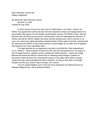
|
2024 aug 24
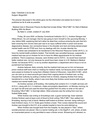
|
2024 aug 20
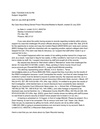
|
More... |
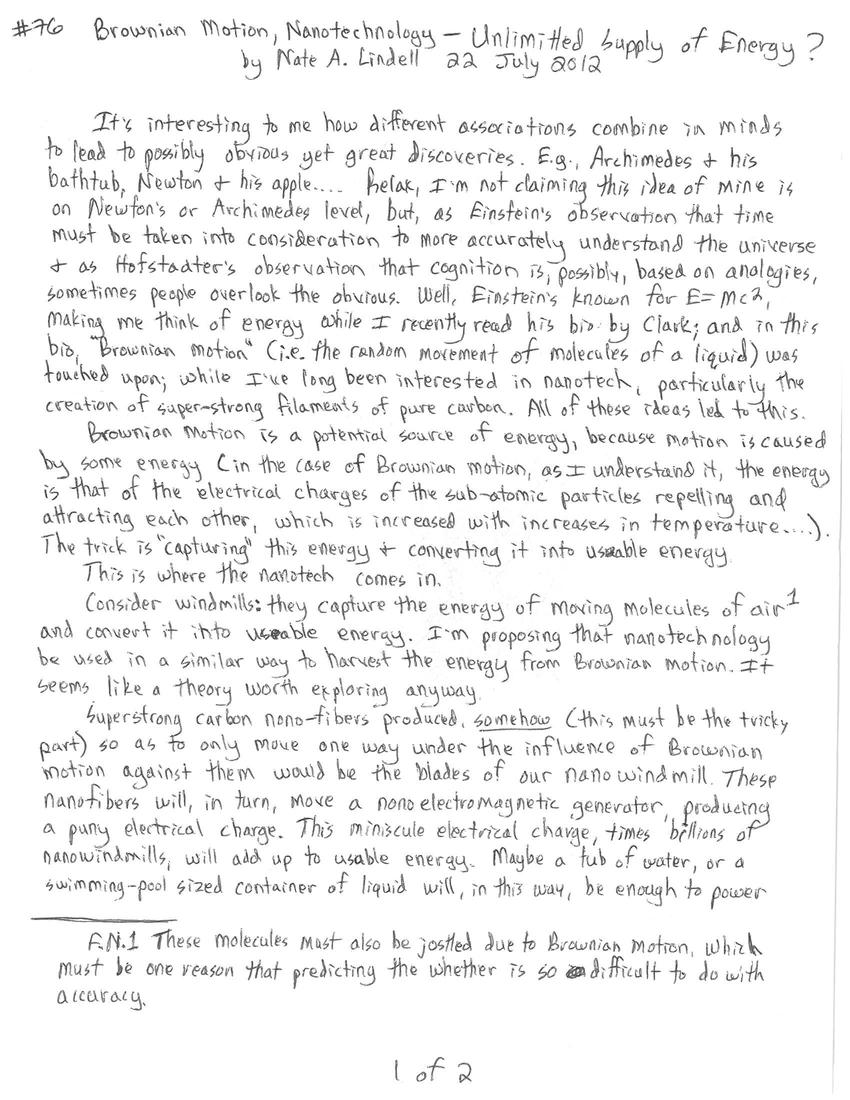
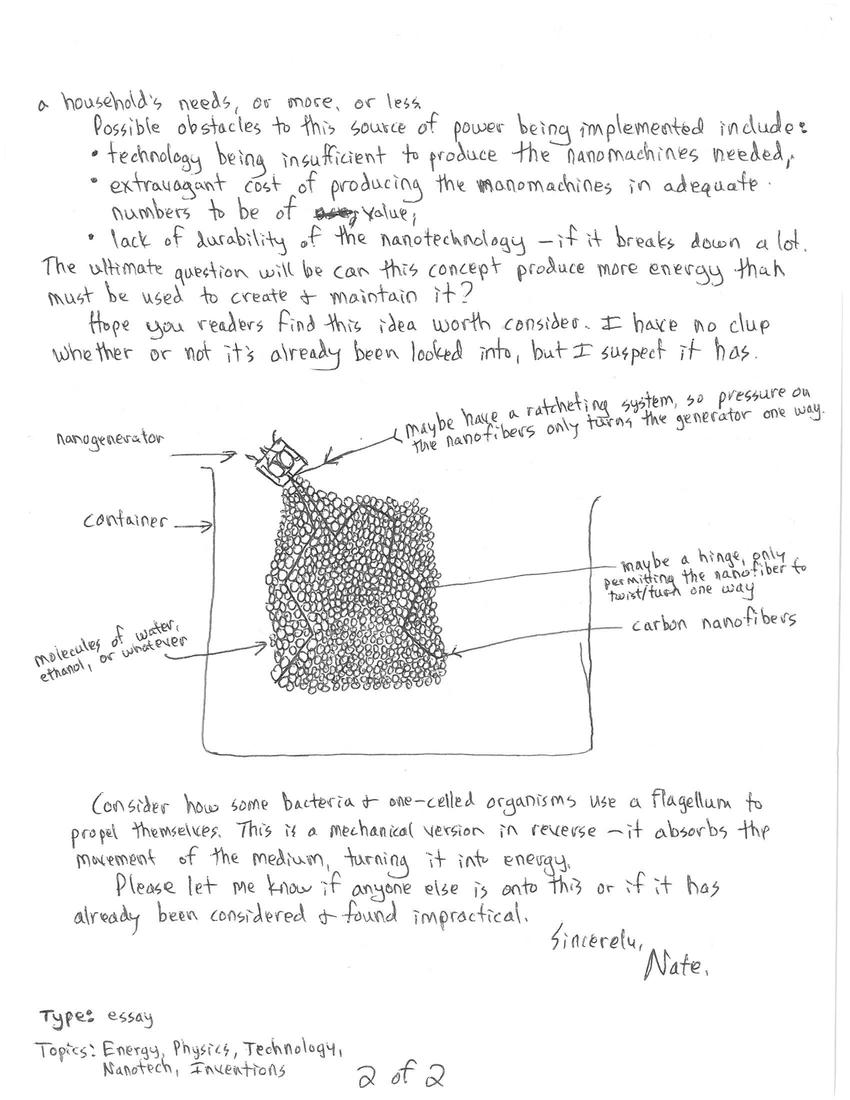

Replies (2)
The good news is that the brownian ratchet is still up for debate since one could for example configure one side of the ratchet to exist in a vacuum, while the other side is hit with particles. Many people argue that even this would not work because the ratchet would vibrate regardless even in a vacuum since the whole ratchet itself is still subject to its own brownian motion of the actual particles that make up the ratchet device. Ultimately this would have to be tested in a lab though using empirical evidence rather than scientists just making claims that "it won't work". I'm all for testing these ideas out.
One idea to consider is static electricity, which can be produced from random motions. Rubbing a comb on wool produces a charge, which you then can spark a metal door handle with. How can we apply that to nanotech? Consider the thought experiment: A small plastic nano bead vibrates randomly due to brownian motion in a box full of air... This box has some wool in it. The box is tiny. The box also has some metal in it. The plastic nano bead vibrates randomly due to brownian motion and touches the wool every so often. When the plastic bead touches the wool it gathers electrons. Randomly this nano bead vibrates near some metal every so often. When it comes near the metal it shorts out and causes electricity. This energy can be trapped in a capacitor and reused.
Scientists generally think it is impossible to produce energy from brownian motion since Richard Feynman supposedly already proved that it won't work due to the second law of thermo. The problem however is that empirical studies need to be done on this subject, and scientists seem unwilling to test it due to them being busy with other things. Some people hope to eventually convince a nanotech lab to try some of these brownian motion ideas out. Even if they fail to work, it's still a spectacular thought experiment. The worst case: it may be impossible to extract energy from brownian motion at room temperature, but the thought experiments still are extremely useful and spur on scientific thinking. The best case: these brownian motion energy devices may actually work if engineered correctly - but you are battling the terrible Second Law of thermo, which could be falsified.